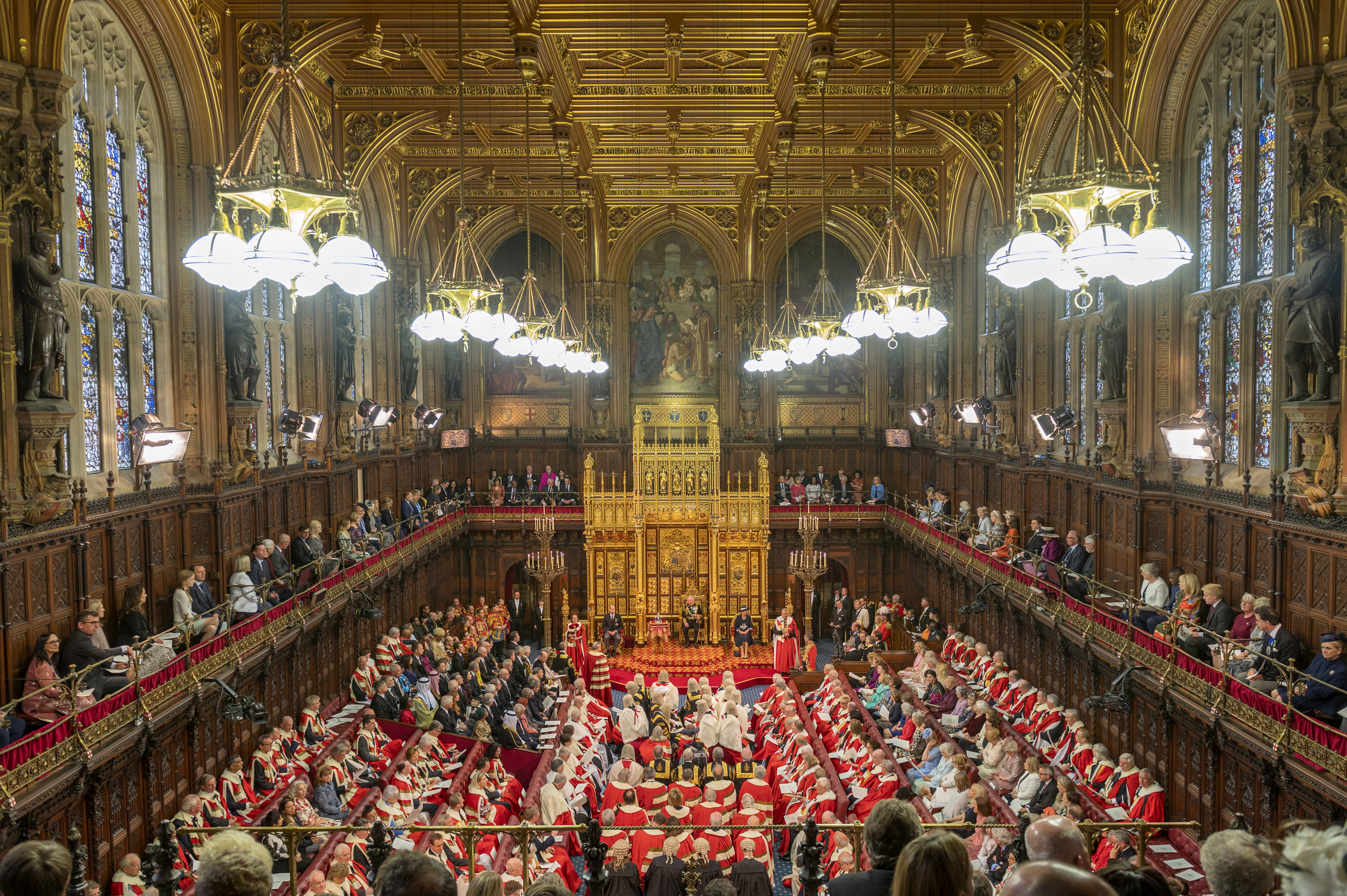|
Woolsack
The Woolsack is the seat of the Lord Speaker in the House of Lords, the Upper House of the Parliament of the United Kingdom. Before 2006, it was the seat of the Lord Chancellor. History In the 14th century King Edward III (1327–1377) said that his Lord Chancellor whilst in council should sit on a wool bale, now known as "The Woolsack", in order to symbolise the central nature and great importance of the wool trade to the economy of England in the Middle Ages. Indeed, it was largely to protect the vital English wool trade routes with continental Europe that the Battle of Crécy was fought with the French in 1346. In 1938, it was discovered that the Woolsack was, in fact, stuffed with horsehair. When it was remade, it was re-stuffed with wool from all over the British Commonwealth as a symbol of unity. From the Middle Ages until 2006, the presiding officer in the House of Lords was the Lord Chancellor and the Woolsack was usually mentioned in association with the office o ... [...More Info...] [...Related Items...] OR: [Wikipedia] [Google] [Baidu] |
Woolsack (Irish House Of Lords)
The Woolsack is the seat of the Lord Speaker in the House of Lords, the Upper House of the Parliament of the United Kingdom. Before 2006, it was the seat of the Lord Chancellor. History In the 14th century King Edward III of England, Edward III (1327–1377) said that his Lord Chancellor whilst in council should sit on a wool bale, now known as "The Woolsack", in order to symbolise the central nature and great importance of the wool trade to the economy of England in the Middle Ages. Indeed, it was largely to protect the vital Medieval English wool trade, English wool trade routes with continental Europe that the Battle of Crécy was fought with the French in 1346. In 1938, it was discovered that the Woolsack was, in fact, stuffed with horsehair. When it was remade, it was re-stuffed with wool from all over the Commonwealth of Nations, British Commonwealth as a symbol of unity. From the England in the Middle Ages, Middle Ages until 2006, the presiding officer in the House of ... [...More Info...] [...Related Items...] OR: [Wikipedia] [Google] [Baidu] |
State Opening Of Parliament
The State Opening of Parliament is a ceremonial event which formally marks the beginning of a session of the Parliament of the United Kingdom. It includes a speech from the throne known as the King's (or Queen's) Speech. The event takes place in the House of Lords chamber on the first day of a new session, which is usually in May or June, and traditionally in November, but can occur at any time of year depending on the timing of General Elections and parliamentary session start dates. It takes place in front of both Houses of Parliament. The monarch, wearing the Imperial State Crown, reads a speech that has been prepared by his or her government outlining its plans for that parliamentary year. The most recent ceremony was held on 10 May 2022. Queen Elizabeth II opened every session of Parliament during her reign, except in 1959, 1963, and 2022. In 1959 and 1963, she was pregnant with Prince Andrew and Prince Edward respectively and those two sessions were opened by Lords ... [...More Info...] [...Related Items...] OR: [Wikipedia] [Google] [Baidu] |
Medieval English Wool Trade
The medieval English wool trade was one of the most important factors in the medieval English economy. The medievalist John Munro notes that " form of manufacturing had a greater impact upon the economy and society of medieval Britain than did those industries producing cloths from various kinds of wool." The trade's liveliest period, 1250–1350, was 'an era when trade in wool had been ''the'' backbone and driving force in the English medieval economy'. The wool trade was a major driver of enclosure (the privatisation of common land) in English agriculture, which in turn had major social consequences, as part of the British Agricultural Revolution. Among the lasting monuments to the success of the trade are the 'wool churches' of East Anglia and the Cotswolds; the London Worshipful Company of Clothworkers; and the fact that since the fourteenth century, the presiding officer of the House of Lords has sat on the Woolsack, a chair stuffed with wool. Early Middle Ages During ... [...More Info...] [...Related Items...] OR: [Wikipedia] [Google] [Baidu] |
Baroness Evans Of Bowes Park (51111527606)
Baron is a rank of nobility or title of honour, often hereditary, in various European countries, either current or historical. The female equivalent is baroness. Typically, the title denotes an aristocrat who ranks higher than a lord or knight, but lower than a viscount or count. Often, barons hold their fief – their lands and income – directly from the monarch. Barons are less often the vassals of other nobles. In many kingdoms, they were entitled to wear a smaller form of a crown called a ''coronet''. The term originates from the Late Latin, Latin term , via Old French. The use of the title ''baron'' came to England via the Norman Conquest of 1066, then the Normans brought the title to Scotland and Italy. It later spread to Scandinavia and Slavic lands. Etymology The word '':wikt:baron, baron'' comes from the Old French , from a Late Latin "man; servant, soldier, mercenary" (so used in Salic law; Alemannic law has in the same sense). The scholar Isidore of Seville ... [...More Info...] [...Related Items...] OR: [Wikipedia] [Google] [Baidu] |
.jpg)


